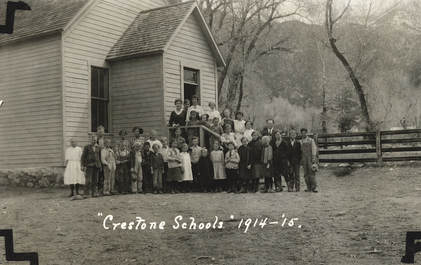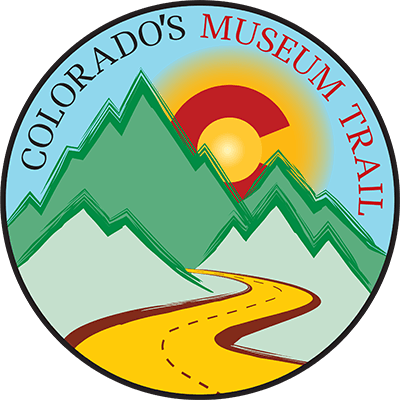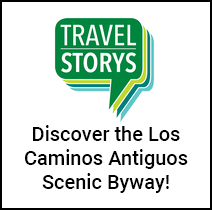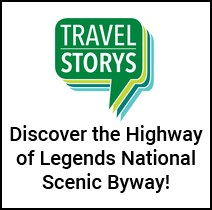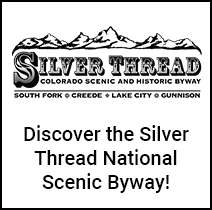Life in a High Desert Valley
With 7 inches of annual precipitation and an elevation of 7,500 feet or above, the San Luis Valley qualifies as an alpine desert. This desert is unique in that it boasts precious water resources. Mountain runoff feeds ancient aquifers whose waters sustain central-pivot irrigation systems. Hand dug acequias carry water from streams to fields. Centennial farms and ranches (30 and counting) can be found throughout the Valley. These operations have been in the same families for over 100 years and serve as testaments to the longstanding agricultural traditions of this high desert valley. Here herds of cattle still graze the high grasslands in the summer, and trucks brimming with potatoes ramble down country roads.
1 - Los Caminos Antiguos Scenic and Historic Byway and the Old Spanish Trail – Los Caminos Antiguos Scenic and Historic Byway is a 129-mile route that traverses the northern outpost of the Spanish Territorial expansion that occurred in the 16th century. These “Ancient Roads” provide year-round panoramic vistas of the Sangre de Cristo and San Juan Mountain ranges, the San Luis Valley, and the Great Sand Dunes National Park and Preserve. Interpretive markers along the route tell the stories of settlement and the culture of the area. Brochures for the Los Caminos are available in museums and visitor centers.
The Old Spanish Trail which for the southern most part as it comes into Colorado follows most of the same path as the Los Caminos. The Trail originated in ancient, native American Indian trade routes. Two of these routes ran north-south along the eastern and western margins of the upper Rio Grande Valley, between the adobe pueblos of present-day New Mexico and Colorado's San Luis Valley.
2 - Sangre de Cristo Heritage Center & Museum – The San Luis Museum and Cultural Center was constructed in the 1930s by the Works Progress Administration (WPA) and houses an extensive collection of local works of art. Many Hispano arts traditions are showcased here including murals, religious figures known as “santos,” and embroidery. The complex also features a morada replica and a theater. Summer: Saturday and Sunday 10am-4pm | 719.672.3611.
3 - Jack Dempsey Museum and Park – The Jack Dempsey Museum and Park is a tribute to the world champion heavyweight boxer. The museum, opened in 1966, is housed in the modest cabin where Dempsey was born and contains many personal artifacts including the boxing gloves he wore during a famous bout in New York. Memorial Day Weekend-September: Monday-Saturday 9am-5pm |
719.843.5207.
4 - S.P.M.D.T.U. Concilio Superior – Formed in 1900, the Society of Mutual Protection of United Workers, also known as Sociedad Protección Mutua de Trabajadores Unidos, was the first mutual aid society established in the Valley to provide aid for widows and orphans and to counter discrimination toward Spanish speaking laborers and their families. The headquarters for the Society, built in Antonito in 1926 and recently restored with the assistance of the Colorado Historical Society’s State Historical Fund, serves as an architectural icon for the Society’s ideals and the historic period.
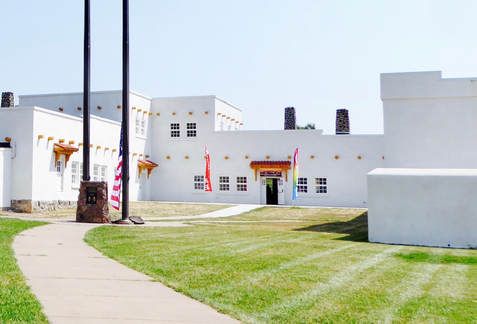
Sangre de Cristo Heritage Center, San Luis
5 - Adams State University, Luther Bean Museum -- Dedicated to the preservation of the history, art, and culture of the San Luis Valley, the Luther E. Bean Museum highlights collections of Southwest pottery; Hispanic religious art (retablos); items associated with ASU’s founder, Colorado governor William H. “Billy” Adams; and works by local and regional artists, including bronzes by ASU alumnus William Moyers ‘39 and Allan Houser. The museum is located in Adams State’s first library on the second floor of Richardson Hall (built 1925). Open Monday-Friday, 1 PM – 5 PM, (summer: 1:30-4:30 PM) and by appointment. 719-587-7151. https://www.adams.edu/lutherbean/
6 - Homelake Veterans' History Museum – The History Center Museum, located in the original dining hall at the Colorado State Veterans Center at Homelake, houses memorabilia and records of the old Soldiers’ and Sailors’ Home. Also on display are collections of military mementos, uniforms, and equipment donated to the museum by veterans and their families. The Museum has a library of military focus and a database of veterans connected to the San Luis Valley. Tuesdays: 9am-12pm &1pm-4pm | Other hours by appointment | 888.838.2687.
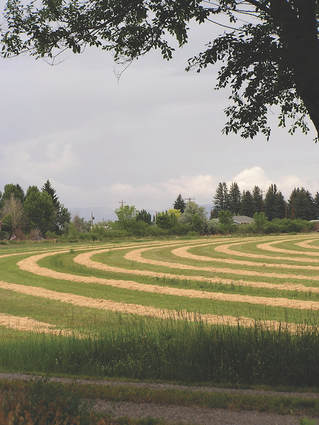
7 - Monte Vista History Museum – As the name implies, the views from Monte Vista toward the neighboring mountain ranges are grand. Visitors may enjoy strolling through the historic downtown district, with its well-preserved buildings and homes, including the old post office and Carnegie Library. Walking tour pamphlets are available at the Monte Vista Information Center |
719.582.0660
8 - Rio Grande County Museum – Many different groups have made their homes in the San Luis Valley, including miners, Hispano settlers, and Native Americans. The Rio Grande County Museum and Cultural Center interprets the history and culture of these people. In addition to exhibits, the museum offers lecture series and special programs for children. Tuesday-Saturday: 10am-5pm |
719.657.2847 or
800.233.4403.
9 - Silver Thread Scenic Byway - South Fork Visitors' Center – The Center provides a wealth of information about South Fork and the western reaches of the San Luis Valley as well as the historic and scenic stops along the Silver Thread Scenic Byway. Open Monday-Friday, 8:30 to 5pm |
800.571.0881
Oral History (audio, 40min): Ruth Marie Colville talks about "One River Many Voices" in the San Luis Valley of southern Colorado. Video is the property and collection of the Off Family.
The video was provided with permission to San Luis Valley Museum Association by the Off family.
10 - Saguache County Museum – The Saguache County Museum is an excellent place to learn about daily life in one of the Valley’s small, agricultural communities. While touring the museum’s themed exhibits, guests may feel as if they’ve journeyed back to a simpler time. Antique furniture, historic farming and ranching implements, and photographs of Saguache pioneers are just a few of the many items on display. Memorial Day-the 3rd Saturday in September: 9am to 4pm | 719.655.2805.
11 - Robertson’s Flour Mill – A crude mill was originally constructed by Otto Mears around 1872 to provide flour for the Indian Agency and the settlers of the northern area of the San Luis Valley. The Hotchkiss brothers, Enos and Preston, replaced the original mill with a three-story mill in 1873 and later sold it to the Robertson Family, who ran the operation for many years. It is the only water-powered mill still standing in the western United States. Tours by appointment only | 719.221.3869.
12 - Crestone School House – Crestone, located on the eastern edge of the San Luis Valley, is nestled at the base of the Sangre de Cristo Mountains. The valley views from Crestone are striking. The old Crestone Schoolhouse is a National Historic Register site that dates to the 1880s. This rural schoolhouse served local schoolchildren until 1949 and was recently restored with the assistance of the Colorado Historical Society’s State Historical Fund. Crestone School House is located on Cottonwood Street at Carbonate Street. Learn more about the school and the town at the Crestone Historical Museum.
